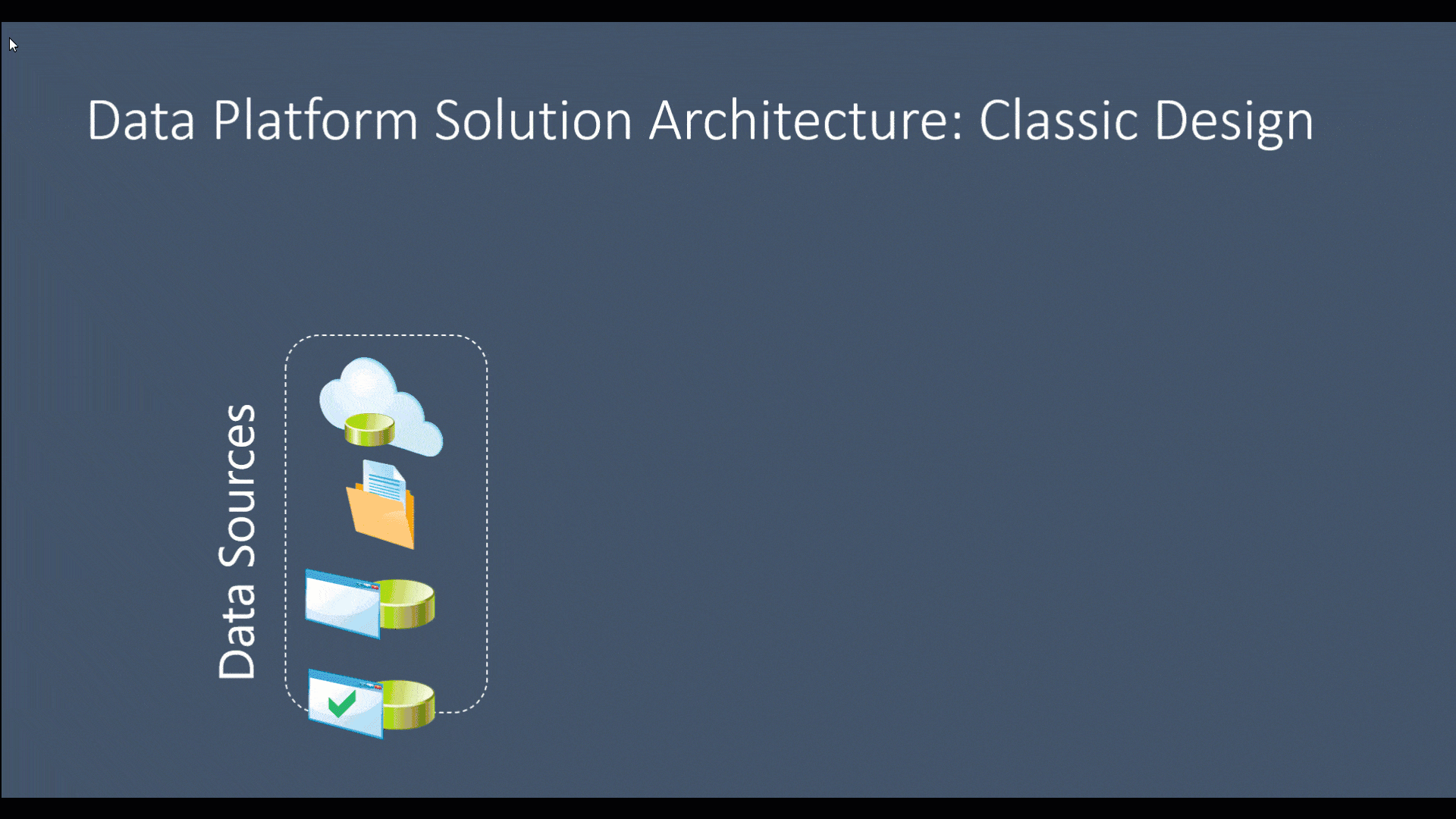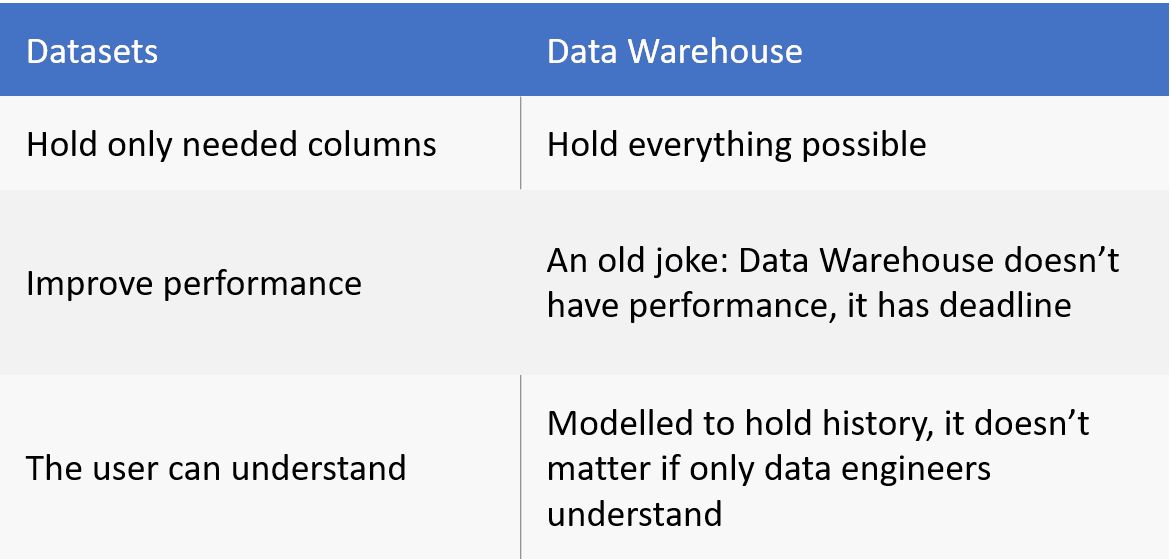
The animation on the top of this article tries to track the evolution of the enterprise architecture since SQL Server 7.0 introduced tools for ETL, Semantic model and much more.
Some of you probably remember these tools as SSIS and SSAS. At that time they had even older names, but no one wants to confess remembering them to not expose your age.
Why the Data Warehouse is not Enough
The Data Warehouse (or whatever you use today) has the responsibility to hold the complete history of the data.
It’s not about choosing what you would like keep, it’s about keeping everything (or at least try). If a machine learn algorithm is used, it could discover something you would never imagine. That’s why you need to keep the data.
Who would imagine diapers and beer are co-related? How many more gold mines your data may be hiding?
As a result, the model of a Data Warehouse is not simple: Slowly Changing Dimensions are not simple for the end users.
We need a model which expose the most important data for the user in a way he can understand
Semantic Model to the Rescue
That’s what the semantic models are: A view over the Data Warehouse, built in such a way end users could understand its meaning.
At that time self-service was already in mind, using Excel and Analysis Services. It was difficult, but the first step was the Semantic Model, a Model representing the business in a way the user could understand.
Power BI Arrives
When Power BI arrived, it took ownership of a piece of this architecture. An argument lasted a long time: Should a data warehouse be entirely built in Power BI, or should Power BI use a Data Warehouse as a source?
In my personal opinion, this should never have been considered. The rules were exactly opposite:

The Semantic Model name change completes the meaning
Just a few weeks ago, Microsoft made the name change: Dataset became Semantic Model.
Some may look at this as only a name change, but it’s a full architectural cycle being completed: We started with Semantic Models using an architecture where top-down was the rule and self-service very difficult.
Power BI started to take ownership of the architecture, piece by piece and calling it Dataset.
When young ones were deeply involved on BI and the old ones were thinking Semantic Models were part of the past, Microsoft Fabric comes into place, completing the cycle.
The cycle completion gives us the best of all scenarios:
- We can build top-down and bottom-up architectures together
- We can have the full history and the Semantic Model at the same time
- Self-Service is everywhere
- We have a portal to manage the data strategy of the entire company
- We are in the cloud
The cycle completes and gives us a new era of enterprise data management.





Load comments